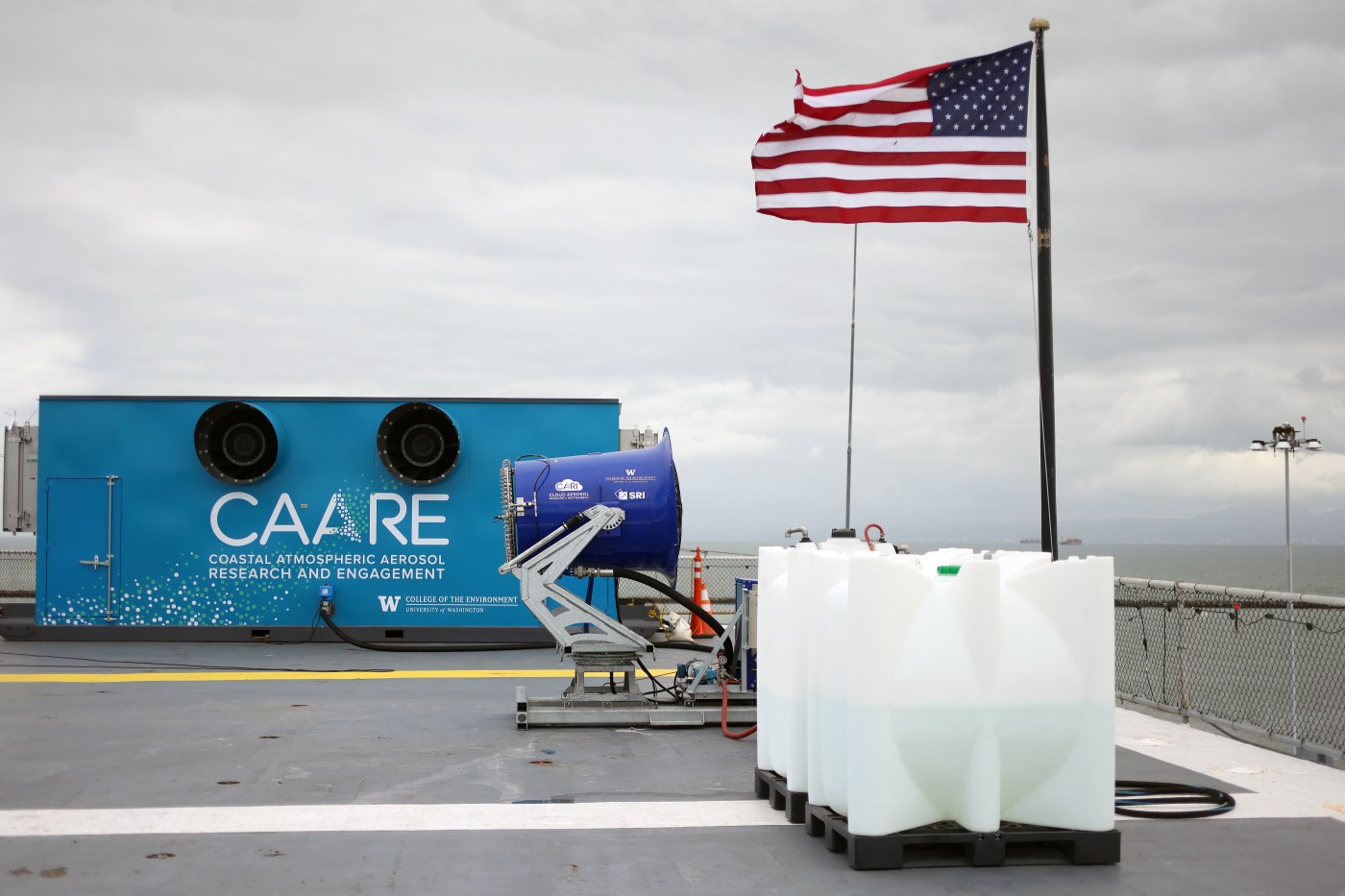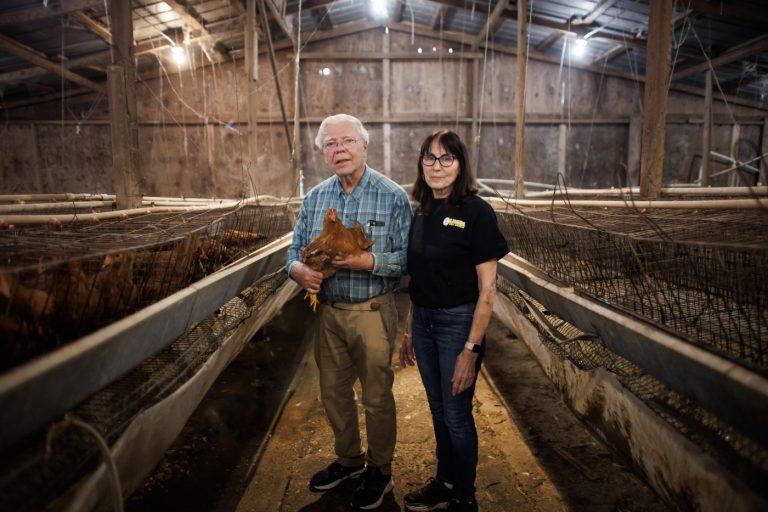The city of Alameda has indefinitely shut down the Marine Cloud Brightening Program — a study based out of the University of Washington and set up on the deck of the U.S.S. Hornet to utilize the San Francisco Bay’s ideal cloudy conditions — citing concerns over health and safety.
The city asked the Hornet’s administrators and the University of Washington to stop the experiment, stating it was in violation of the Hornet’s lease with the city and was taking place without the city’s knowledge, officials announced in a Facebook post May 4.
The city has contracted biological and hazardous material consultants to independently investigate the environmental safety and health of the experiment, officials said, adding that “there is no indication that the spray from the previous experiments presented a threat to human health or the environment.”
The program stopped its experiments prior to Alameda’s public announcement, according to a statement released by Dr. Rob Wood, principal investigator and Dr. Sarah Doherty, program director. The scientists added that the city was informed of the study’s corresponding educational exhibit in advance but asked for a closer review of the study after news articles released details in April.
“This type of review was not unexpected given that the approach in undertaking the studies and engaging with the public on the USS Hornet … is something new,” Wood and Doherty wrote. “We are happy to support their review and it has been a highly constructive process so far.”
The Marine Cloud Brightening Project aims to test whether ejecting plumes of microscopic droplets of salt water into the clouds will make them more reflective, helping to counteract warming climates by sending heat back up into the sky instead of allowing it down to the ground. Based out of the University of Washington, the program partnered with the U.S.S. Hornet, a World War II-era aircraft carrier-turned museum which is perpetually docked on the coast of Alameda, to conduct experiments on its top deck.
The team of scientists and engineers developed the spray technology and nozzle designs over the course of several years in the lab and launched the next phase of the study — testing whether the theory works in actual atmospheric conditions — in April. Scientists had planned to test the technology over the course of several months and measure its effectiveness with computer models.
Before beginning tests on the Hornet, the program went through an expert assessment of requirements and “found that the study does not exceed established regulatory or permitting thresholds,” Wood and Doherty wrote. The plumes of salt water “operate well below established thresholds for environmental or human health impact for emissions.”
A comment on the city’s Facebook post from the USS Hornet’s account read in part: “We believed that our existing permits and lease covered these activities when we started. As we now know, there was a gap in communication and understanding of the scope of the project and we are committed to working with the City to meet all of their needs regarding this effort.”
Related Articles
More bodies found after deadly flash floods in Indonesia
As Canadian wildfires rage, western town prepares for ‘last stand’
A strange fungus could transform emerging cicadas into ‘saltshakers of death,’ scientists say
The surprising force stalling climate progress: California restaurants
Photos: Aurora borealis from the Bay Area and far beyond
The city’s independent investigation will look to see whether the chemical compounds in the salt water particles the experiment releases into the atmosphere “are a hazard either inhaled in aerosol form by humans and animals, or landing on the ground or in the bay,” according to the city’s Facebook post.
The findings will be presented to the Alameda City Council in June and will be shared with the public, according to the post.
“We continue to appreciate our engagement with the community on the nature of this type of research study, which is not designed to impact clouds, the environment or climate,” Wood and Doherty wrote.












